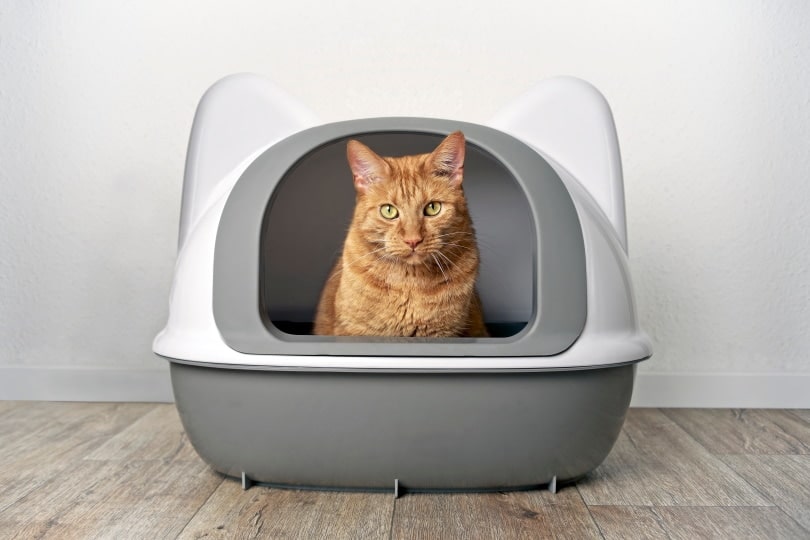Electronics and other big-ticket items may be the most popular deals on Cyber Monday, but you can bet that there are plenty of deals on cat supplies as well.
Of course, to get the most out of these purrfect deals, it is best to shop at a dedicated pet supplier, like Chewy. Amazon also offers a range of deals on pet supplies every Cyber Monday – though perhaps not as many as Chewy.
Let’s take a look at the deals offered this year!

10 Cyber Monday Deals on Cat Supplies
1. 30% Off – Wellness CORE Grain-Free Original Formula Dry Cat Food
[chewybox title=”Wellness CORE Grain-Free Original Formula Dry Cat Food” text=”” image=”https://excitedcats.com/wp-content/uploads/2020/06/Wellness-CORE-Grain-Free-Dry-Cat-Food.jpeg” url=”https://prf.hn/click/camref:1101l8LeP/pubref:ecblackfriday/destination:https://www.chewy.com/wellness-core-grain-free-original/dp/34435″]- Fortified with vitamins and minerals
- Support healthy skin and a smooth, lustrous coat
- Real deboned turkey and deboned chicken are the first two ingredients
2. 30% Off – Okocat Original Premium Wood Clumping Cat Litter
[chewybox title=”Okocat Original Premium Wood Clumping Cat Litter” text=”” image=”https://excitedcats.com/wp-content/uploads/2021/05/Okocat-Original-Premium-Wood-Clumping-Cat-Litter.jpg” url=”https://prf.hn/click/camref:1101l8LeP/pubref:ecblackfriday/destination:https://www.chewy.com/okocat-original-premium-wood-clumping/dp/106791″]- 99% dust-free so you and your feline can breathe easier
- Absorbs liquid on contact and creates solid clumps for hassle-free scooping
- 100% free from artificial fragrances, synthetic chemicals, toxic dyes and GMOs
3. Up to 41% Off – ScoopFree Original Automatic Self-Cleaning Cat Litter Box
- AUTOMATICALLY REMOVES WASTE: No scooping, cleaning or refilling your cat's litter box for weeks
- UNBEATABLE ODOR CONTROL: Crystal litter removes smell by absorbing urine and dehydrating solid waste
- NO MORE MESSY FLOORS: Low-tracking crystals are 99% dust free and don’t stick to your cat’s paws
4. 50% Off – Fat Cat Catfisher Kitty Hoots Doorknob Hanger Cat Toy
[chewybox title=”Fat Cat Catfisher Kitty Hoots Doorknob Hanger Cat Toy” text=”” image=”https://excitedcats.com/wp-content/uploads/2021/10/Fat-Cat-Catfisher-Kitty-Hoots-Doorknob-Hanger-Cat-Toy.jpg” url=”https://prf.hn/click/camref:1101l8LeP/pubref:ecblackfriday/destination:https://www.chewy.com/fat-cat-catfisher-kitty-hoots/dp/111794″]- Hangs around any doorknob for some swinging fun
- Stuffed with catnip inside to entice and drive your furry feline wild
- Each toy dangles at different lengths for added fun and a challenge
5. 23% Off – Advantage II
[chewybox title=”Advantage II” text=”” image=”https://excitedcats.com/wp-content/uploads/2021/10/Advantage-II.jpg” url=”https://prf.hn/click/camref:1101l8LeP/pubref:ecblackfriday/destination:https://www.chewy.com/advantage-ii-flea-spot-treatment-cats/dp/28683″]- Begins working within 12 hours to kill fleas on contact
- Waterproof formula continues working for up to four weeks, even after bathing
- Kills eggs, larvae, and adult fleas to break the life-cycle and help prevent re-infestation
6. 40% Off – Frisco Holiday 29.5-in Candy Cane Sisal Cat Scratching Post with Toy
[chewybox title=”Frisco Holiday 29.5-in Candy Cane Sisal Cat Scratching Post with Toy” text=”” image=”https://excitedcats.com/wp-content/uploads/2021/10/Frisco-Holiday-29.5-in-Candy-Cane-Sisal-Cat-Scratching-Post-with-Toy.jpg” url=”https://prf.hn/click/camref:1101l8LeP/pubref:ecblackfriday/destination:https://www.chewy.com/frisco-holiday-295-in-candy-cane/dp/263057″]- Festive, holiday design looks just like a classic peppermint candy cane
- Gives your kitty a place to scratch, saving your furniture, carpets and curtains
- Features soft, green faux fur on the base and a dangly, green pom pom toy at the top
7. 30% Off – Frisco 76-in XXL Heavy Duty Cat Tree
[chewybox title=”Frisco 76-in XXL Heavy Duty Cat Tree” text=”” image=”https://excitedcats.com/wp-content/uploads/2021/11/Frisco-76-in-XXL-Heavy-Duty-Cat-Tree.jpg” url=”https://prf.hn/click/camref:1101l8LeP/pubref:ecblackfriday/destination:https://www.chewy.com/frisco-76-in-xxl-heavy-duty-cat-tree/dp/240966″]- Extra-large heavy-duty cat tree for your cat to call their own
- Sisal posts to encourage healthy scratching
- Removable, machine-washable bolstered perch cover
8. 50% Off – STAR WARS THE MANDALORIAN GROGU Pumpkin Cat Collar
[chewybox title=”STAR WARS THE MANDALORIAN GROGU Pumpkin Cat Collar” text=”” image=”https://excitedcats.com/wp-content/uploads/2021/10/STAR-WARS-THE-MANDALORIAN-GROGU-Pumpkin-Cat-Collar.jpg” url=”https://prf.hn/click/camref:1101l8LeP/pubref:ecblackfriday/destination:https://www.chewy.com/star-wars-mandalorian-grogu-pumpkin/dp/299358″]- Made for cats 8 pounds and over, whether they spend their time indoors, outdoors or both
- Features sturdy, plastic hardware with soft-contoured edges to ensure kitty comfort
- Adjustable design lets you find the best fit for cats with neck sizes from eight to twelve inches
9. 24% Off – Iams ProActive Health Urinary Tract Health with Chicken Adult Dry Cat Food
[chewybox title=”Iams ProActive Health Urinary Tract Health with Chicken Adult Dry Cat Food” text=”” image=”https://excitedcats.com/wp-content/uploads/2021/10/Iams-ProActive-Health-Urinary-Tract-Health-with-Chicken-Adult-Dry-Cat-Food.jpg” url=”https://prf.hn/click/camref:1101l8LeP/pubref:ecblackfriday/destination:https://www.chewy.com/iams-proactive-health-urinary-tract/dp/176307″]- Made with chicken as the first ingredient
- Reduces the pH of your cat’s urine to promote urinary system health
- Dry cat kibble formulated to support urinary tract health in adult cats
10. 38% Off – Sheba Meaty Tender Sticks Cat Treats
- Contains Fifty (50) 0.14 oz. SHEBA Meaty Tender Sticks Chicken Flavor Cat Treats
- SHEBA Meaty Tender Sticks Treats for Cats are made with real meat for a taste adult cats love
- These irresistible cat snacks are made with no corn, wheat, soy and no artificial flavors
What We Saw Last Year
Chewy
Last year, Chewy provided discounts on a range of cat supplies. Litter was the most heavily discounted, with savings of up to 70% in some cases. Of course, this discount didn’t apply to all cat litters. Only specific items were set aside for the sale.
Furthermore, each item had its own specific discount. While the website did advertise maximum savings for each category, not every item hit this maximum saving category.
On top of cat litter, cat food and treats were also discounted. These were one sale for slightly less, with a maximum of 50% in most cases.
Premium cat foods seem to be absent completely from the sale – either because the foods were too expensive for Chewy to offer a discount or because they had special guidelines from the company to not offer a discount.
Veterinary prescription food was sometimes included under these discounts. However, they were only discounted up to 20%. However, given that prescription pet foods are extremely expensive, this small discount could potentially save you a lot of money.
Cat accessories were advertised as well. This category was heavily discounted at up to 70% and included everything from cat collars to harnesses. There were significantly fewer cat accessories on sale than dog accessories, though.
However, this disparity is likely due to the lower amounts of cat accessories on the market in general. While every dog wears a collar, this isn’t necessarily the case with cats.

Amazon
Amazon is much more low-key about its cat supply deals. For the most part, they seem to focus on electronics and other big-name products. Because they don’t focus on cat supplies specifically, you can expect fewer deals.
Plus, if you’re looking for cat supplies specifically, it can be difficult to sort through all the other deals and find them.
In fact, their Cyber Monday advertisement didn’t provide any specific information about cat supplies. While pages were dedicated to categories like toys and health, there was not a page for cats or even pets in general.
However, they did offer random cat supplies throughout the day.

Conclusion
You can find deals on most sorts of cat supplies on Cyber Monday, especially if you shop at pet-specific retailers. Usually, cheaper items like accessories and food receive the biggest discounts. However, certain brands will obviously be more discounted than others.
We can’t promise that you’ll find your cat’s specific food on sale, but you will be able to find some food on sale.
Furthermore, cat litter is often heavily discounted, as are litter boxes. If you’re interested in an automatic litter box, now would be the time to buy it.
Other big-ticket items to look out for include cat trees, veterinary diet foods, and medications. If your cat is already on a specific flea and tick preventative medication, you may want to stock up during this sale.
Featured Photo Credit: Fernando Calmon, Shutterstock
Contents
- 10 Cyber Monday Deals on Cat Supplies
- 1. 30% Off – Wellness CORE Grain-Free Original Formula Dry Cat Food
- 2. 30% Off – Okocat Original Premium Wood Clumping Cat Litter
- 3. Up to 41% Off – ScoopFree Original Automatic Self-Cleaning Cat Litter Box
- 4. 50% Off – Fat Cat Catfisher Kitty Hoots Doorknob Hanger Cat Toy
- 5. 23% Off – Advantage II
- 6. 40% Off – Frisco Holiday 29.5-in Candy Cane Sisal Cat Scratching Post with Toy
- 7. 30% Off – Frisco 76-in XXL Heavy Duty Cat Tree
- 8. 50% Off – STAR WARS THE MANDALORIAN GROGU Pumpkin Cat Collar
- 9. 24% Off – Iams ProActive Health Urinary Tract Health with Chicken Adult Dry Cat Food
- 10. 38% Off – Sheba Meaty Tender Sticks Cat Treats
- What We Saw Last Year
- Conclusion













